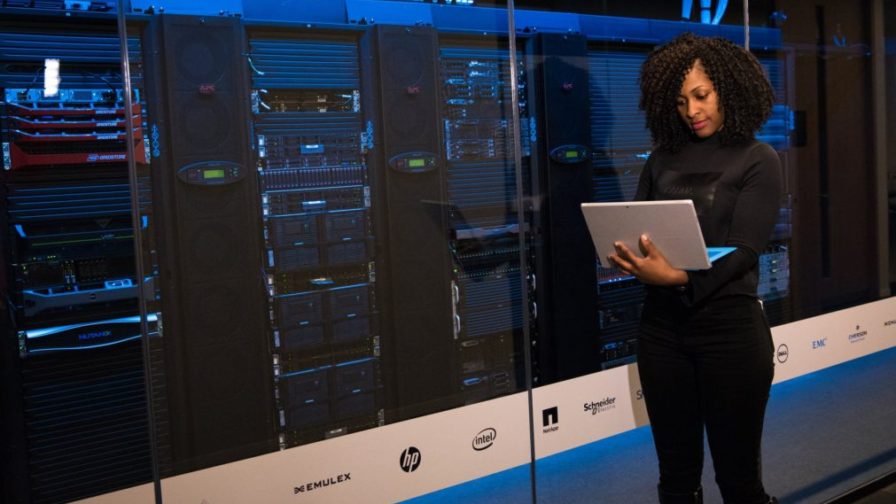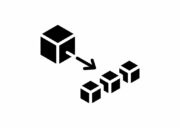
Cloud Computing can help you to respond to critical issues that require solving to build smart applications that map your business in a reliable, secure, and agile way. The Digital Developer Conference: Cloud-Native Security is a great opportunity to develop skills with leading open-source tools such as IBM Cloud, Red Hat Openshift, Kubernetes, Istio, and many others. Here is a video about the Conference:
Organised and led by subject matter experts from IBM and Red Hat, the sessions and hands-on labs offer beginners and experts alike an opportunity to explore techniques in Application Security, Data Security, and DevSecOps. Security is critical – that’s why this virtual conference combines security with application development and DevOps. Last year, thousands of developers participated in the conference.
The Digital Developer Conference: Cloud-Native Security lasts over five hours, with many presentations and labs organised in three tracks, and will be held with reference to four different macro-regions: Americas, June 24 ET; Europe and India, June 25; Asia Pacific July 1st.
You can sign-up for free by clicking here.
Application Security, Data Security, and DevSecOps
This conference offers a free opportunity to develop skills with the leading open-source tools and technologies on IBM Cloud and Red Hat OpenShift, enabling you to build smart and secure cloud-native applications. Technical sessions and hands-on labs offer beginners and experts alike an opportunity to explore three dedicated tracks:
- Application Security,
- Data Security
- DevSecOps.
Security needs to be managed as an essential pillar in all software and infrastructure development and can be ensured by unlocking the true value of the cloud. From modernizing applications with containerized microservices to securing data while training AI models, or building continuous, secure DevOps pipelines in an increasingly complex hybrid cloud, developers face a myriad of challenges when it comes to security in a cloud-native hybrid cloud environment. With the right knowledge, tools and infrastructure, building secure high-performance cloud is achievable.
Why attend?
Staying current is hard work, so IBM and RedHat have made it a little easier. IBM Developer bundles up the best technical info on popular software development topics and delivers it to your inbox. You can get updated with hands-on labs, with achievement reports on offer to confirm your new skills.
Registration provides you with a free IBM Cloud account, so you can jump right in at the moment the conference starts.
Attending the conference means you can learn with proven and popular open-source technologies backed by a trusted community, and you can get coding right away with exercises designed for you by expert IBM and Red Hat developers. This new learning paradigm will empower you in your next professional challenges.
Enjoy the convenience of a free, 100% digital event, with live and on-demand access post-conference. You can display the proof of your progress with badges for your newly acquired industry-recognized skills in the field of DevOps and DevSecOps.
DevSecOps, the evolution of a species
It is no longer enough for ICT practitioners to simply develop a long-term maintainable code infrastructure and then hand security off to another team. Security has remained a separate practice for too long, and DevSecOps takes it’s name from DevOps, providing a philosophy and a framework for an integrated, united effort when it comes to security, which should be embedded in the organisation from the very first code.
DevSecOps is a better way for security practitioners to operate and contribute value with less friction. We know we must adapt our ways quickly and foster innovation to ensure that data security and privacy issues are not left behind because we were too slow to change.
By developing security as code, we strive to create awesome products and services, provide direct insights to developers, and generally favour iteration over always trying to come up with the best answer before a deployment. Security and compliance will become available to be consumed as services. We will unlock and unblock new paths to help others see their ideas become a reality.
In our security-first efforts, we can’t simply rely on scanners and reports to make code better. We will attack products and services like an outsider, to help you work out how best to defend what you’ve created. We will learn the loopholes, look for weaknesses, and we will work with you to provide remediation actions instead of long lists of problems for you to solve on your own.
We will not wait for our organisations to fall victim to mistakes and attackers. We will not settle for finding what is already known; instead, we will look for anomalies yet to be detected. We will strive to be a better partner by valuing what you value.
React, when you’re gonna code!
Code and infrastructure development require an ever-increasing time and planning capability. New challenges appear abruptly and a good professional needs to react immediately. “Learn the skills to react with speed and confidence by using solutions on IBM Cloud and Red Hat OpenShift alongside leading open source contributions by IBM and Red Hat to Kubernetes, Istio, Open Container Initiative, Cloud Native Computing Foundation, and Apache Foundation,” says Willie Tejada, GM & Chief Developer Advocate of IBM, in his introductory blog post for this virtual conference.
“Choose the track and session for the cloud-native skills you need today to build the smart, secure applications of tomorrow,” writes Tehaja.
Here are just a few of the featured technical sessions, keynotes, and hands-on labs:
- Deep-dive into data-in-motion encryption with Istio auto mTLS and key management;
- From hardware root of trust (RoT) to containers: Running trusted containers on a high assurance OpenShift platform;
- Kubernetes networking to control access with network policy, Calico, NodePort, LoadBalancer, and Ingress;
- Adding secure encrypted object storage, persistent volume to a MongoDB with S3FS-Fuse;
- Source-to-Image (S2I) secure deployment with UBI, custom builder, and runtime images and templates;
- IBM Garage best practices: Developing secure applications for enterprise clients.
Go Istio
In contrast with the old monolithic applications, a cloud native approach provides great convenience. However, there’s no denying that cloud adoption can put strains on DevOps teams undergoing a period of change. Developers must use microservices to architect for portability, while operators must manage extremely large hybrid and multi-cloud deployments.
The fusion between developers and operations is rewarding, but at the same time very demanding and fast-changing. Fortunately the software environment is creating products that help ease this integration – that’s exactly where Istio comes into the picture, in software production.
Istio lets you connect, secure, control, and observe services.
At a high level, Istio helps reduce the complexity of deployment. Istio is a completely open-source service mesh that layers transparently onto existing distributed applications. It is also a platform, including APIs that allow it to integrate into any logging platform, telemetry, or policy system. Its diverse feature set lets you successfully (and efficiently!) run a distributed microservice architecture, and provides a uniform way to secure, connect, and monitor microservices. Istio addresses the challenges developers and operators face as monolithic applications transition towards a distributed microservice architecture. Let’s take a more detailed look at Istio’s service mesh:
The term service mesh is used to describe the network of microservices that make up such applications and the interactions between them. As a service mesh grows in size and complexity, it can become harder to understand and manage. Its requirements can include discovery, load balancing, failure recovery, metrics, and monitoring. A service mesh often also has more complex operational requirements, like A/B testing, canary rollouts, rate limiting, access control, or end-to-end authentication.
Istio provides behavioral insights and operational control over the service mesh as a whole, offering a complete solution to satisfy the diverse requirements of microservice applications.
You can add Istio support to services by deploying a special sidecar proxy throughout your environment. This intercepts all network communication between microservices, then you can configure and manage Istio using its control plane functionality to manage automatic load balancing, fine-grained control of traffic behavior, a pluggable policy layer, configuration API and many more metrics and services.
Create your custom agenda
Digital Developer Conference: Cloud Native Security has been built for a global audience, respecting the different needs of each macro-region. Enrolled participants can choose from our regional viewings. During the conference, participants are free to jump from track to track, creating a personalised agenda according to individual needs and interests.
The conference tracks and tools allow the building of smart, secure applications, mixing different architectural paradigms. Whether modernizing applications with containerized microservices, securing data in a smart cloud or building continuous, secure DevOps pipelines in an increasingly complex hybrid cloud, you’ll gain confidence to face the challenge thanks to the skills gained from IBM Cloud and Red Hat OpenShift alongside popular open-source technologies like Kubernetes and Istio.
Participants will learn how to use leading open-source tools, discover best practices from experts, and join in with hands-on labs in three dedicated tracks:
Application Security: Securing containerized applications on Kubernetes or microservices. Includes configuration, policies, and app governance, and APIs.
Data Security: Securing your application data and analytics. Includes privacy, data storage, encryption, AI/ML, and NIST controls.
DevSecOps: Building a secure CI/CD pipeline. Includes integration, testing, vulnerability scanning, image governance, and automation.
We know you’ll want to join the Digital Developer Conference: Cloud Native Security, so register your interest, and we’ll see you there!




